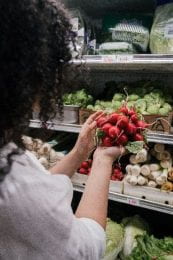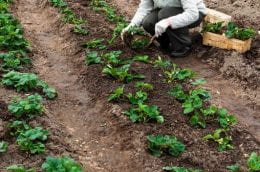 Eating fresh local produce is always a treat and one of the best things about summer! Here are a few tips on maintaining the quality and safety until you are ready to eat it.
Eating fresh local produce is always a treat and one of the best things about summer! Here are a few tips on maintaining the quality and safety until you are ready to eat it.
Store in the Refrigerator: Apples (>7 days), apricots, berries, cherries, cut fruits, grapes, herbs, mushrooms, green beans, beets, broccoli, cabbage, carrots, cauliflower, cut veggies, leafy greens, summer squash, sweet corn
Ripen on the counter, then store in the refrigerator: Peaches and pears
Store at room temperature: Apples (<7 days), bananas, citrus fruits, watermelon, muskmelon, basil (in water), *cucumbers, *eggplant, **garlic, **onions, *peppers, **potatoes, pumpkins, **sweet potatoes, tomatoes, winter squash.
*Cucumbers, eggplant and peppers can be kept refrigerated 1-3 days if they are used soon after removal from the refrigerator.
**Store garlic, onions, potatoes, and sweet potatoes in a well-ventilated area in the pantry.
 to purchase fresh, unprocessed fruits and vegetables and honey at farmers markets in selected counties throughout the state.
to purchase fresh, unprocessed fruits and vegetables and honey at farmers markets in selected counties throughout the state. Produce that’s in season is oftentimes cheaper, easier to find, and tastier than out of season produce. Use this helpful guide to navigate fruit and vegetables that are available this spring to help you eat better while getting the most bang for your buck nutritionally.
Produce that’s in season is oftentimes cheaper, easier to find, and tastier than out of season produce. Use this helpful guide to navigate fruit and vegetables that are available this spring to help you eat better while getting the most bang for your buck nutritionally. 


